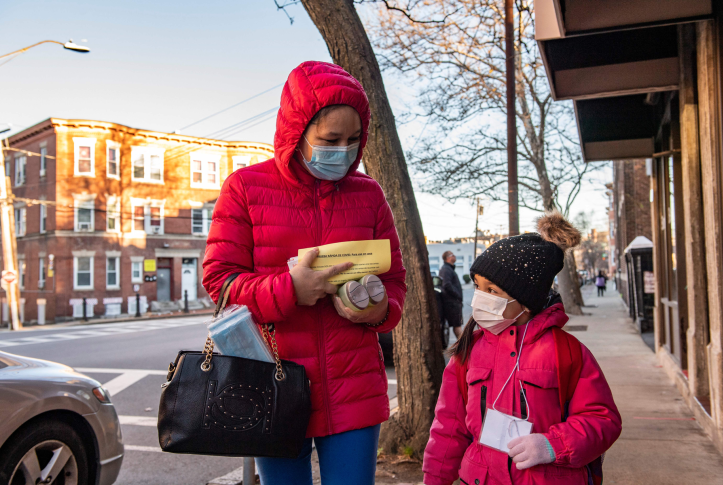In October, the Biden administration finalized a rule to fix the “family glitch,” a barrier that has kept millions of people from accessing financial assistance on the Affordable Care Act’s (ACA) marketplaces. Under the new rule, around 1 million people are expected to enroll in subsidized marketplace plans. Marketplaces now have the crucial responsibility of implementing and broadcasting this new route to affordable health insurance.
Background
The ACA created marketplaces and associated subsidies to provide affordable, comprehensive health insurance to people who cannot access such coverage through their job or a public program. Marketplace subsidies are unavailable to people with an offer of affordable coverage through their job or a family member’s job. Under a previous rule, a family’s employer plan was considered “affordable” if the employee’s premium contribution for self-only coverage was below approximately 9.5 percent of their household income; even if the contribution for dependent coverage exceeded this amount, dependents were barred from subsidized marketplace plans based on the employee’s self-only coverage cost. This loophole, known as the “family glitch,” has blocked more than 5 million people — particularly low-income women and children — from accessing marketplace subsidies.
Fixing the family glitch has been a policy priority for state-based marketplaces, providers, and patient advocates, many of whom have argued that the glitch is based on a misinterpretation of the ACA. The Biden administration’s new rule, effective for the 2023 plan year, gives dependents with an offer of unaffordable employer-based family coverage access to marketplace subsidies. But a successful family glitch fix will require marketplaces to implement new infrastructure, conduct significant outreach, and ensure consumers have sufficient enrollment assistance and ample time to sign up for more affordable coverage.
Updating Eligibility and Enrollment Websites
The family glitch fix extends eligibility for marketplace subsidies to a new group of consumers, requiring changes to online engines that calculate financial assistance on the federal marketplace website (HealthCare.gov) and state marketplace websites. Some state sites and HealthCare.gov have been updated accordingly, allowing newly subsidy-eligible dependents to enroll entirely online. Other marketplaces, still in the midst of technology updates, have adopted short-term workarounds. New York’s marketplace, for example, launched an online calculator for individuals and their families to estimate whether an offer of employer coverage is affordable, after which consumers can contact customer service to receive a final determination of subsidy eligibility.
Robust Outreach to Alert Consumers
With the rule finalized only weeks before the annual open-enrollment period, many dependents who benefit from the family glitch fix may be unaware of their new subsidy eligibility. Reaching these individuals could be a challenge because of their experiences with the marketplace; because a previous rule barred them from receiving financial assistance, they may not view the marketplace as a source of affordable coverage.
To broadcast the new rule, some marketplaces are reaching out directly to consumers likely to benefit. The federal marketplace identified people who may have been denied subsidies because of the glitch to target with direct outreach. Similarly, Minnesota’s marketplace is mailing notices to people deemed potentially eligible for tax credits in 2023 under the new rule, and Connecticut’s marketplace is texting consumers.
Marketplaces are also engaging employers. The District of Columbia’s marketplace is launching an education campaign involving chambers of commerce, including the local restaurant association, while Idaho's marketplace is actively working with employer groups and human resource organizations.
Providing Adequate Enrollment Assistance
Marketplaces are also offering enrollment assistance to consumers weighing new coverage options. People impacted by the family glitch were previously forced to choose between unaffordable coverage or going uninsured. Now these consumers can access marketplace subsidies, but families still have a choice to make. If dependents enroll in a marketplace plan while the employee remains in job-based coverage, the family will enroll in different plans with separate deductibles, separate out-of-pocket maximums, and most likely different provider networks and prescription drug formularies; thus, some families may prefer to keep everyone enrolled in the same plan, rather than sending some family members to the marketplace.
The Biden administration is training navigators and brokers on the implications of the fix so they can help consumers weigh the advantages and disadvantages of enrolling in marketplace coverage given their particular circumstances. State-based marketplaces are also providing training materials and notifying assisters of specific consumers’ potential eligibility.
Broadcasting Enrollment Opportunities in the New Year
Although newly eligible dependents can enroll in subsidized marketplace plans during open enrollment, some may not learn about the opportunity until after this window closes. Fortunately, the rule change will trigger a special-enrollment period for the first 60 days of 2023 for individuals with employer-sponsored insurance no longer considered “affordable.” However, marketplaces stretched thin by open enrollment and the impending expiration of the COVID-19 public health emergency may need additional resources to maintain adequate outreach. Given the lack of consumer awareness and the burdens associated with the sign-up process in some states, marketplaces may also want to consider a targeted special-enrollment period later in 2023, similar to the successful COVID-19 special-enrollment periods in 2020 and 2021. Vermont, for example, is considering special-enrollment flexibilities for consumers who are now eligible for subsidies under the new rule.
Looking Ahead
While the ACA led to a historically low uninsured rate, the family glitch has left many people behind. Fixing this glitch helps deliver on the ACA’s promise to ensure that access to affordable health insurance is not limited to people with subsidized employer plans. Yet the success of the fix will largely depend on the ACA’s marketplaces as they update their technology, broadcast the new opportunity, and help consumers understand their new coverage options.






